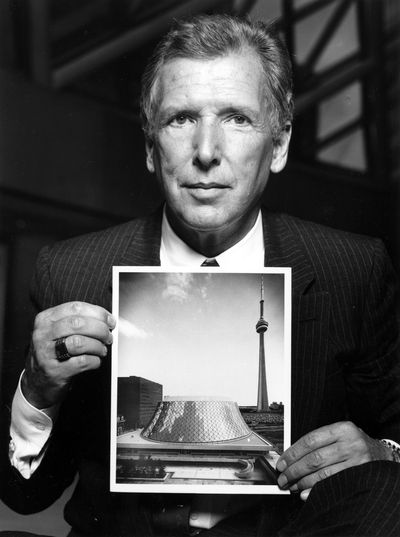Noted Canadian architect Arthur Erickson, 84, dies
Work includes university campus, California Plaza

Arthur Erickson, the prominent Canadian architect who designed the campus of Simon Fraser University, Robson Square in Vancouver, B.C., and the Canadian Embassy in Washington, D.C., and whose work on the California Plaza towers in downtown Los Angeles nearly proved his financial and professional undoing, has died. He was 84.
Erickson died Wednesday in Vancouver, according to a statement released by his family. The cause was not given.
His career, which spanned more than five decades, was shot through with contradiction. He was a dedicated, widely traveled scholar of architectural history who found himself strangely out of step with the Postmodernist movement of the 1970s and ’80s, which sought to reassert the value of historic styles. He was a fierce critic of the dehumanizing effects of what we now call globalization whose biggest projects – the sleek, mirrored-glass California Plaza certainly among them – can seem faceless and alienating.
Most puzzling of all, he was a Vancouver architect whose buildings tended to look terrible in the rain.
Born in Vancouver in 1924, Erickson studied architecture at the University of British Columbia and McGill University in Montreal. Erickson began work for a succession of large firms in Vancouver. He moonlighted with his friend Geoffrey Massey, designing houses that often paired concrete – a material Erickson loved, calling it “the marble of our time” – with wood and large expanses of glass.
In 1963, Erickson and Massey were the surprise winners of a design competition for the campus of the new Simon Fraser University, east of Vancouver. That victory led to increasingly large commissions for Erickson in Canada and around the world, including the widely admired Museum of Anthropology at the University of British Columbia.
By summer 1980, Erickson’s office was large and established enough to find itself as one of two firms being considered for a major redevelopment project at the top of Bunker Hill in downtown Los Angeles. Erickson prevailed with a scheme calling for three towers.
But the developer called for significant changes to his original design, and Erickson proved ill-equipped for the sort of political wrangling and gamesmanship that often accompany large-scale urban projects. By 1990, the faltering economy in the United States not only put the third California Plaza tower on indefinite hold – it would never be built – but also pushed Erickson to the brink of insolvency.
Late in his life, Erickson enjoyed something of a revival. He went back to designing dramatic private residences. In 2006, the Vancouver Art Gallery mounted a major retrospective of his work. And in recent years he collaborated on an expansion of his Museum of Anthropology at the University of British Columbia. It is scheduled to be unveiled early next year.